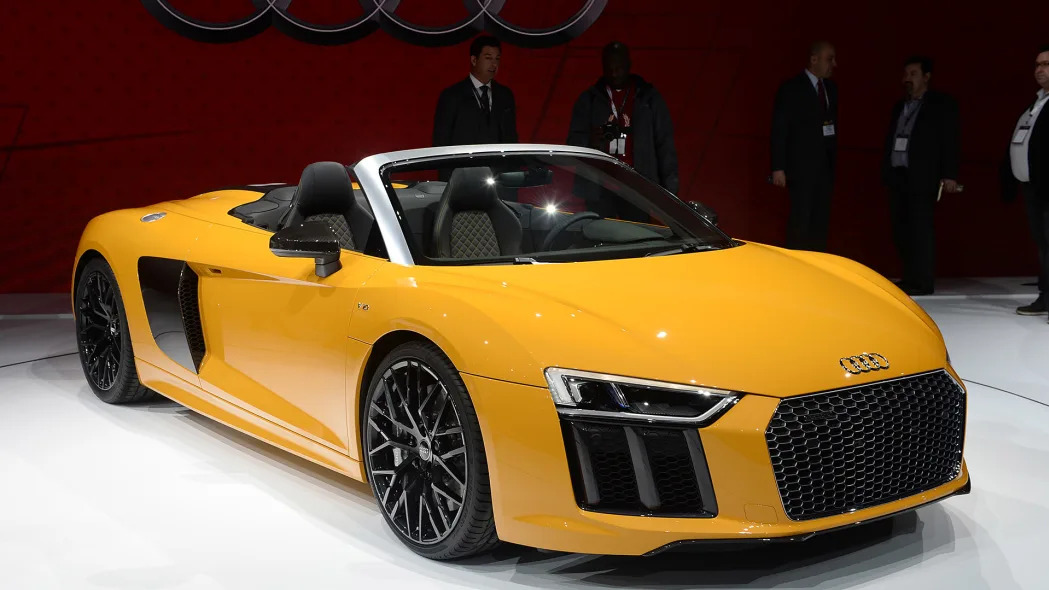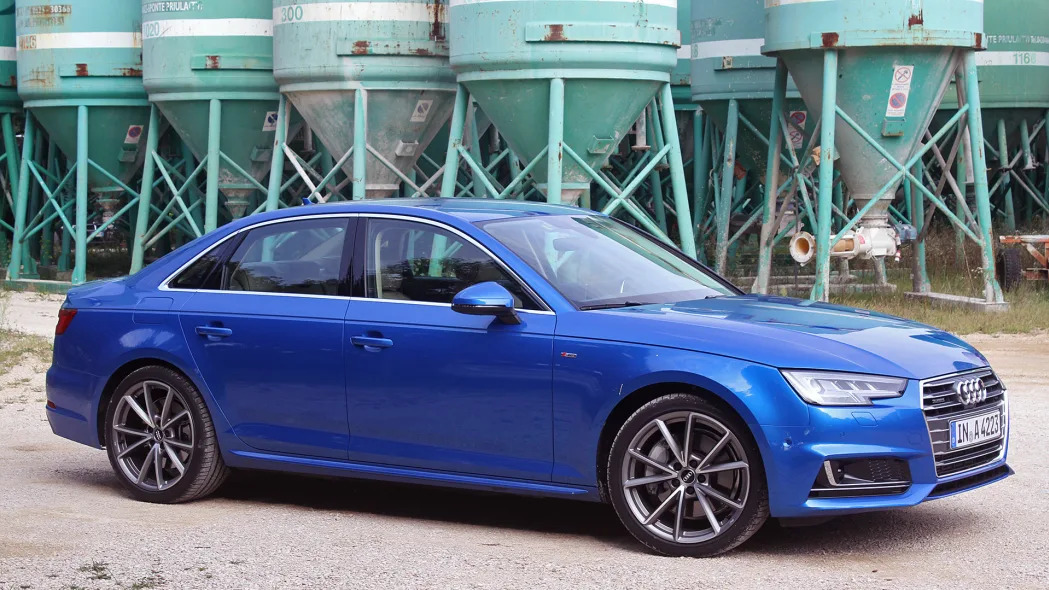Audi was, even very recently, seen as a near-luxury brand, on par with niche if specific European automakers like Saab and Volvo. But early in the 21 st century, the four-ringed circus from Ingolstadt found a way to elevate itself to the level of its aspirational German rivals at Mercedes and BMW. While these brands were immersed in what we like to refer to as their Baroquecoco Period – a moment in which the exteriors of their cars gained bulges and, ahem, bangles, and their interiors failed to keep pace with the march of technology – Audi kept it simple.
Its designs avoided the imperious Faberge gilding of Benz, or the Ghery-esque swoop and swoon of Bimmer. Instead, they were clean inside and out, with simple and elegant lines, comprehensible ergonomics, and subtle new signatures that were recognizable without being in any way overwrought. Customers, alienated by their rivals, flocked. Sales rocketed. And Audi became known as a formal/functional design leader – the Mid-Century Modern Architecture of the luxury vehicle world.
But now BMW and Mercedes have taken note and corrected course. Both brands have discarded their dalliance with carbuncularity and are now, debatably, near the top of their game design-wise. Benz is delivering handsome stolidity not seen since the Bruno Sacco era of the Seventies and Eighties, and BMW has regained a grip on the kind of elegant sportiness characterized by Paul Bracq during the same time period. And the interiors of both brands are consistently on a level of craftsmanship, attention to detail, delight, and material selection and innovation once reserved for Bentley and Rolls.
Its designs avoided the imperious Faberge gilding of Benz, or the Ghery-esque swoop and swoon of Bimmer. Instead, they were clean inside and out, with simple and elegant lines, comprehensible ergonomics, and subtle new signatures that were recognizable without being in any way overwrought. Customers, alienated by their rivals, flocked. Sales rocketed. And Audi became known as a formal/functional design leader – the Mid-Century Modern Architecture of the luxury vehicle world.
But now BMW and Mercedes have taken note and corrected course. Both brands have discarded their dalliance with carbuncularity and are now, debatably, near the top of their game design-wise. Benz is delivering handsome stolidity not seen since the Bruno Sacco era of the Seventies and Eighties, and BMW has regained a grip on the kind of elegant sportiness characterized by Paul Bracq during the same time period. And the interiors of both brands are consistently on a level of craftsmanship, attention to detail, delight, and material selection and innovation once reserved for Bentley and Rolls.
This puts Audi in something of a design double-bind. First, its transaction price has escalated to the point where it lives in the same set as BMW and Mercedes. But now that those brands have caught up with (or perhaps even surpassed) the crisp Auto Union sensibility, how does it differentiate itself?
"You have to have a clear design theme," says Frank Lamberty, Audi's exterior design director. "We define this as Quattro, because this is unique for Audi, this is our tradition. And Quattro means we have all the wheels powered, so we want to show that in our design. And this is different from a rear-wheel-drive car. We are coming from a front-wheel-drive platform, so everything is more balanced. Everything is in the middle, rather than leaned back. That is a clear proportion thing. And secondly, it's about pronouncing the wheels."
Beyond this, given that the brand made a name for itself based on a conservative sensibility, there is the concern that it has painted itself into a rounded corner of sorts, denying options or opportunities for more significant change. This can leave the limiting impression that new cars are barely distinguishable from their (undeniably handsome) predecessors save the slightest evolutionary details.
"It depends on the car you're talking about," Lamberty says. "If you have a strong design sense like on the A5 it can be liberating. On something like the A4, it's a little harder. We're in the middle class with these cars, not the high luxury. But that B9 A4, it's a quiet, clean car. Don't tell me it's boring, it's clean. If you do a clean car, the design has to be really clear and really defined."
Also key is the importance of family resemblance in enunciating a brand's equities. While BMW and Benz are perhaps just as guilty of this, the sedan offerings from Ingolstadt are almost indistinguishable save their S, M, L, XL sizing. We're compulsive, so we appreciate a consistent identity, but we also wonder if there should be some visible benefit to purchasing an A6 over an A4.
"That is a point every sporting company has," Lamberty says. "It's a point of the heritage. And you're right, after a while, it starts to show a similarity – turning a circle. This is what we want to change. We want to give the sign in our design that, first, it's an Audi. But we want to give each car family a character. I think the A4 has a totally different identity than the A5. But it's clearly Audi, it's clearly Quattro."
One area in which Audi has excelled as a point of differentiation in recent years is in interior detailing. In fact, we would posit that Audi has done more to realistically reimagine the interior for the 21 st century than most other brands. This was evidenced first in its innovative scribble-able touchpad from some years back, but has moved on to features like its purely – and adaptable – amorphous full-color LCD dash, Virtual Cockpit, first revealed on the third-generation TT sports coupe and now filtering down throughout the range, and also in the cool HVAC adjustment controls integrated into the vents of that vehicle. Layers of capacitive and touch-centric tablet-like surfaces have appeared on recent Audi concepts like the Q8 crossover coupe. But as a Tower of Babel-like information overload creeps from our smartphones into our cars, we wonder how the rational thinkers at Audi plan to help us decipher it.
"One thing is clear: you can't turn back that information. You're talking about autonomous, everything, it will make your head explode," Lamberty says. "We try in our decisions not to get into an overflow situation, we try to get back into the clean. Take a look at the Q8 interior, that's where we would like to go to. We would like to keep everything clean and reduced, keep dealing with information by dividing screens up, keeping functions separate. There are new tasks coming along, and that means we have to find new solutions and that's always a big change. I can tell you the engineers have some amazing solutions that you will see very soon. It's not a joke. It is quite serious."
Related Video:













Sign in to post
Please sign in to leave a comment.
Continue